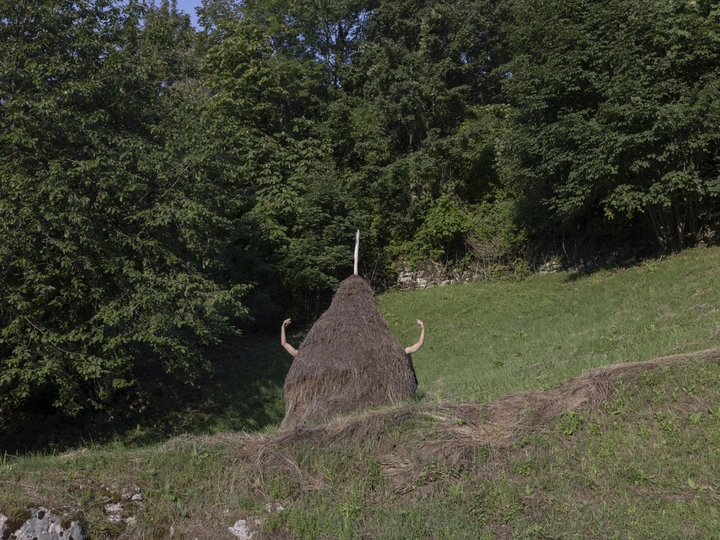estado límbico

Filipa Frois Almeida
Hugo Reis
Founded in 2012 by Filipa Frois Almeida and Hugo Reis FAHR 021.3 is an internationally awarded atelier, that operates in the expanded fields of art and architecture, incorporating artistic practices as a methodology in architectural scope.
Deriving from the german word Erfahrung (experience), FAHR 021.3 develops conceptual strategies on the brink of unexpected, contradiction and decontextualisation. The restlessness and the constant desire to seek new solutions, give rise to a variety of performances differing on manifesto, temporary, scale and materials.
The atelier has been distinguished nationally and internationally for a set of projects that are characterized by their formal and provocative approach such as Hairchitecture (PT), São João Structure (PT), Metamorfose (PT), Eclipse (PT), Nappe (TW) and Nook (TW). In 2018, Serralves Pavilion was presented at the 16th International Architecture Exhibition La Biennale di Venezia - PUBLIC WITHOUT RHETORIC - on the curatorship of Nuno Brandão Costa and Sérgio Mah. In 2019 they were selected for the 40 under 40 European Design Award, Europeans Center for Architecture, Art, Design and Urban Studies.
FAHR is also founder of other projects in the field of architectural intervention in the landscape. In 2014 is the founder of the collective HODOS, which aims to enhance walking routes by offering a sensitive experience throughout the journey with art and architecture interventions.
In 2018 and 2019 takes part of the General Coordination, Programming and Project Management of Desencaminharte'18, Arte Aplicada ao Lugar, a project to enhance cultural and natural heritage through artistic creativity in public space in Alto Minho, Portugal.
Between 2023 and 2027, FAHR is developing the project ‘A Feira: Beleza, Sustentabilidade e Inclusão’ as part of the cultural and artistic programme of the European Capital of Culture Évora_27.
If we accept the dichotomy that opposes human subjects and the world, and if, as the expression atributed to Heraclitus "nature loves to hide", then culture can be interpreted as an enterprise concerned with the unveiling of being, as was understood by the ancient Greeks and reclaimed in the 20th century by the philosopher Martin Heidegger. Today, in the midst of unprecedented ecological and technological unfoldings that antagonize the new millennium, this framing of ideas suggests the following question: what kind of hybrids emerge when human culture ceases to engage actively with its surroundings and is instead consumed by nature?
estado límbico is an essay that explores the hidden world of artificial natures. It develops an imaginary situated on the opposite side of usually witnessed human/environment symbiosis. The images seek uncanny relations whose causes can be attributed neither to the people nor to the surroundings. Shot inTopoló, a village on the border between Italy and Slovenia, between different layers of abandonment - in places that were once inhabited, but became systematically unattended for generations - the enacted gestures seek to create a speculative archive. The result is a fictional testimony to the successive lives of things/beings after they outside the sphere of the pragmatical lifeworld. Here, the affinities seeked are not rationalized by instrumentality, but are meant to expose usually overlooked contexts which possess a silent life of their own.
Amid the ruins of buildings, forests and fields, the relation between vacancy and meaning is extrapolated to the encounters between bodies and things. In estado límbico the results approximate the nonsense, the surreal and the oniric. The assemblages that emerge from this fictional exercise point to the power of forgetting and to the potentiality of misinterpretation. Faced with an uncertain past, the possibilities for the future are dramatically broadened and speculation flows unrestrained.